Table of contents
- What is Terpinolene?
- What Does Terpinolene Do?
- What is Terpinolene in Weed?
- How Does Terpinolene Make You Feel?
- What Does Terpinolene Do in Weed?
- What Does Terpinolene Smell Like?
- Is Terpinolene Sativa or Indica?
- What is Terpinolene Good For?
- Does Terpinolene Cause Anxiety?
- What Does Terpinolene Taste Like?
- What Strains Have Terpinolene?
- What are the Effects of Terpinolene?
- What is the Difference Between Terpinolene and Limonene?
- Chemical Structure and Properties
- Natural Sources and Occurrence
- Biological Activities and Therapeutic Potential
- Neurological Effects
- Safety Profile and Toxicology
- Industrial Applications
- Future Research Directions
- Conclusion
As someone deeply immersed in the fascinating world of botanicals and their intricate compounds, I've had the pleasure of exploring countless aromatic molecules. Among them, terpinolene stands out as a true marvel, a monoterpene that often plays a starring role in the complex symphony of scents and effects found in various plants, especially cannabis. If you've ever wondered what gives certain strains their unique aroma or contributes to a particular sensation, you're in the right place. Join me as we unravel the mysteries of terpinolene, exploring its science, its presence in cannabis, and its wide-ranging potential.
What is Terpinolene?
Terpinolene is a naturally occurring monoterpene with the molecular formula C10H16 and a molecular weight of 136.23 g/mol. Its systematic name is 1-methyl-4-(propan-2-ylidene) cyclohexene or p-mentha-1,4(8)-diene. The compound is also known by various synonyms including α-terpinolene, delta-terpinene, and is terpinene. As a colorless to pale yellow liquid at room temperature, terpinolene has a boiling point of 186∘C and exhibits a complex aromatic profile characterized by woody, herbal, floral, and citrus notes.
But beyond the chemical jargon, what really defines terpinolene is its aromatic profile. It boasts a complex scent characterized by woody, herbal, floral, and citrus notes. It's this intricate blend that makes it so captivating and contributes significantly to the overall sensory experience of plants in which it's found.
What Does Terpinolene Do?
Terpinolene is far more than just a pleasant aroma; it's a powerhouse of biological activity. Its diverse effects have garnered significant scientific attention, pointing to a wide range of potential therapeutic applications. From fighting off microbes to influencing our brain, terpinolene is a truly versatile compound.
Antimicrobial Properties
One of terpinolene's notable attributes is its significant antimicrobial activity against various pathogens. Studies have shown it possesses antifungal, antibacterial, and antiviral properties. Research indicates that terpinolene exhibits activity against both Gram-positive and Gram-negative bacteria, including resistant strains such as methicillin-resistant Staphylococcus aureus (MRSA). Personally, I find it fascinating how a natural compound can exhibit such robust defenses against microscopic threats. It's also been shown to be effective against fungal pathogens, making it useful in topical applications for conditions like ringworm and toenail fungus.
Antioxidant Activity
Multiple studies have demonstrated terpinolene's potent antioxidant properties. Research indicates that at concentrations of 10−75 mg/L, terpinolene increases total antioxidant capacity in cultured human blood cells. The compound appears to work through multiple mechanisms, including scavenging free radicals and preventing lipid peroxidation. Studies have shown that terpinolene can prevent the oxidation of low-density lipoprotein (LDL) cholesterol, suggesting potential cardiovascular benefits.
Anti-inflammatory Effects
Terpinolene exhibits significant anti-inflammatory properties through multiple pathways. Research has demonstrated its ability to reduce inflammatory markers including tumor necrosis factor-alpha (TNF-a), interleukin-6 (IL-6), and nitric oxide production. A notable study showed that terpinolene, when combined with diclofenac, produced synergistic anti-inflammatory and analgesic effects in chronic inflammation models.
Wound Healing Properties
Research has revealed terpinolene's potential in wound healing applications. Studies demonstrate that it significantly increases fibroblast migration and proliferation while suppressing pro-inflammatory cytokines in a dose-dependent manner. The compound also shows the ability to reduce superoxide anion production and suppress NF-kB activity, contributing to its wound healing efficacy.
Anticancer Properties
Perhaps the most promising area of terpinolene research involves its potential anticancer activities. Multiple studies have demonstrated that terpinolene acts as a potent antiproliferative agent against various cancer cell lines. This includes:
Brain cancer: Terpinolene significantly inhibits neuroblastoma cell growth starting at concentrations of 50 mg/L.
Breast cancer: Studies indicate potential efficacy against breast cancer cells, particularly in chemotherapy-resistant models.
Leukemia: Research has shown terpinolene can downregulate AKT1 expression in leukemia cells and inhibit cell proliferation.
The mechanisms of action appear to involve multiple pathways, including the inhibition of n-nitrosamine formation and modulation of cell cycle progression.
What is Terpinolene in Weed?
Terpinolene is widely distributed in nature, occurring in numerous plant species across various botanical families. Cannabis sativa is one of the most studied sources, where terpinolene typically represents one of the major terpenes found in certain strains. Other significant natural sources include essential oil-rich plants like tea tree (Melaleuca alternifolia), rosemary, sage, and lilac; culinary herbs and spices such as nutmeg, cumin, and cardamom; fruits like apples and various citrus fruits; and coniferous trees like pine trees and other conifers.
While many terpenes are common across various plants, their specific ratios and interactions within the cannabis plant contribute to what's known as the "entourage effect," influencing the overall experience.
How Does Terpinolene Make You Feel?
When it comes to how terpinolene makes you feel, its neurological effects are quite notable. Research has demonstrated its sedative properties when inhaled, with studies showing reduced activity in animal models. The compound appears to work through multiple mechanisms:
- Sedative effects: Inhalation studies in mice demonstrate significant sedative properties, with effects persisting even in olfactory-impaired animals, suggesting systemic absorption.
- Anxiolytic properties: Research indicates potential anti-anxiety effects, with some studies showing calming effects in animal models.
- Neuroprotective potential: Studies suggest terpinolene may contribute to neuroprotection through its antioxidant properties.
It's important to remember that the overall effect of a cannabis strain isn't solely dependent on one terpene. The synergy between cannabinoids like THC and CBD, and the full spectrum of terpenes, creates the unique experience for each individual.
What Does Terpinolene Do in Weed?
In cannabis, terpinolene contributes to both the sensory experience and the potential therapeutic effects. Its presence influences the aroma and flavor, often imparting those fresh, woody, herbal, and citrus notes that many find appealing. Beyond the sensory, its biological activities, as discussed earlier, may contribute to the overall therapeutic profile of certain strains. For example, if you're seeking a strain for relaxation, the sedative and anxiolytic properties of terpinolene could be a contributing factor.
What Does Terpinolene Smell Like?
As mentioned earlier, terpinolene has a complex and multifaceted aromatic profile. It's characterized by woody, herbal, floral, and citrus notes. This intricate blend makes it a versatile ingredient in the fragrance industry and a key contributor to the nuanced aromas of many plants, including specific cannabis strains. From a personal standpoint, I find the interplay of these notes incredibly captivating; it's like a mini-orchestra for the nose!
Is Terpinolene Sativa or Indica?
This is a common question, and it speaks to a broader misunderstanding of how cannabis strains are classified and how terpenes influence effects. While some might associate certain terpenes with "sativa" (energizing) or "indica" (relaxing) effects, it's more accurate to say that terpinolene is prevalent in certain Sativa-dominant strains.
The terms "sativa" and "indica" traditionally refer to the plant's morphology (its physical structure). However, when it comes to effects, the cannabinoid and terpene profiles are far more influential. Strains rich in terpinolene often lean towards the uplifting and energetic side, contributing to the "sativa-like" experience. But it's not a strict rule, and you can find terpinolene in various hybrids. The key is to look at the full cannabinoid and terpene profile, not just the overarching "sativa" or "indica" label.
What is Terpinolene Good For?
Given its wide range of biological activities, terpinolene shows promise for various applications. It's not just an aromatic compound; it's a molecule with potential therapeutic benefits.
- Antimicrobial applications: Its ability to fight bacteria, fungi, and viruses makes it a candidate for topical treatments and disinfectants.
- Antioxidant support: As a potent antioxidant, it could play a role in promoting cellular health and protecting against oxidative stress.
- Anti-inflammatory relief: Its anti-inflammatory properties suggest potential for managing inflammatory conditions.
- Wound healing: Its documented effects on fibroblast migration and proliferation make it interesting for skin repair and wound care.
- Cancer research: Perhaps the most groundbreaking area of study is its potential as an antiproliferative agent against various cancer cell lines.
- Neurological effects: Its sedative and anxiolytic properties suggest potential for managing stress, anxiety, and promoting relaxation.
- Beyond these potential health benefits, terpinolene is also widely used in industrial applications due to its appealing scent and properties:
- Fragrance industry: Used in perfumes, soaps, and cosmetics for its fresh, woody scent.
- Food industry: Approved by the FDA for use in food applications and is generally recognized as safe (GRAS) for human consumption. It is commonly used as a flavoring agent in food products and as a fragrance component in cosmetics and household products.
- Cleaning products: Utilized in household cleaners and insect repellents.
- Pharmaceutical industry: Investigated as a potential active ingredient in therapeutic formulations.
Does Terpinolene Cause Anxiety?
While some terpenes are anecdotally associated with anxiety or paranoia in high doses, research on terpinolene actually points towards anxiolytic (anti-anxiety) properties. Studies indicate potential calming effects in animal models.
It's crucial to distinguish between anecdotal experiences and scientific research. Individual reactions to cannabis and its components can vary widely due to personal biochemistry, dosage, and the presence of other compounds. If you're sensitive to certain cannabis strains, it's always advisable to start with low doses and observe your reaction. However, based on the current scientific understanding, terpinolene itself is more likely to contribute to a sense of calm rather than anxiety.
What Does Terpinolene Taste Like?
Just as its aroma is complex, the taste of terpinolene mirrors its multifaceted scent profile. When present in a food item or a cannabis strain, you might detect:
- Piney notes: A fresh, slightly resinous taste.
- Herbal undertones: A subtle hint of fresh herbs.
- Citrus zest: A bright, sometimes slightly tart, citrusy flavor.
- Floral accents: A delicate, sometimes sweet, floral taste.
These flavors contribute to the overall palatability and complexity of foods and cannabis strains rich in terpinolene.
What Strains Have Terpinolene?
Terpinolene is a prominent terpene in several well-known cannabis strains, often contributing to their distinctive aromas and effects. If you're looking to explore strains rich in this compound, here are a few examples commonly associated with higher terpinolene content:
- Jack Herer: A classic Sativa-dominant strain known for its uplifting and clear-headed effects, often with a distinct piney and citrus aroma.
- Dutch Treat: Another Sativa-leaning hybrid that often exhibits a sweet, piney, and earthy profile.
- Agent Orange: Known for its vibrant citrus aroma, this hybrid often has a notable terpinolene presence.
- Trainwreck: A potent Sativa-dominant hybrid with a strong, spicy, piney aroma.
Remember that terpene profiles can vary significantly even within the same strain due to genetics, growing conditions, and curing processes. If you're seeking a specific terpene profile, it's always best to consult lab reports or ask your dispensary for detailed information.
What are the Effects of Terpinolene?
To summarize, the effects of terpinolene, based on current research, are quite diverse:
- Antimicrobial: Fights against bacteria, fungi, and viruses.
- Antioxidant: Protects cells from oxidative damage and increases antioxidant capacity.
- Anti-inflammatory: Reduces inflammatory markers and can have synergistic effects with other anti-inflammatory agents.
- Wound Healing: Promotes fibroblast migration and proliferation, contributing to tissue repair.
- Anticancer: Shows antiproliferative effects against various cancer cell lines.
- Sedative: Can induce calming and sedative effects, particularly when inhaled.
- Anxiolytic: May help reduce anxiety.
- Neuroprotective: Suggests potential for protecting brain cells.
It's this impressive array of effects that makes terpinolene such an exciting area of research and development.
What is the Difference Between Terpinolene and Limonene?
Both terpinolene and limonene are monoterpenes commonly found in cannabis and other plants, and they both contribute to citrusy notes. However, they have distinct chemical structures, aromas, and often different primary effects.
Let's break down the key differences:
Terpinolene is a naturally occurring monoterpene that has garnered significant scientific attention due to its diverse biological activities and potential therapeutic applications. This comprehensive research review examines the current state of knowledge on terpinolene, covering its chemical properties, natural sources, biological effects, and safety profile.
Chemical Structure and Properties
Terpinolene is a cyclic monoterpene with the molecular formula C10H16 and a molecular weight of 136.23 g/mol. Its systematic name is 1-methyl-4-(propan-2-ylidene) cyclohexene or p-mentha-1,4(8)-diene. The compound is also known by various synonyms including α-terpinolene, delta-terpinene, and isoterpinene. As a colorless to pale yellow liquid at room temperature, terpinolene has a boiling point of 186∘C and exhibits a complex aromatic profile characterized by woody, herbal, floral, and citrus notes.
Natural Sources and Occurrence
Terpinolene is widely distributed in nature, occurring in numerous plant species across various botanical families. Cannabis sativa is one of the most studied sources, where terpinolene typically represents one of the major terpenes found in certain strains. Other significant natural sources include:
- Essential oil-rich plants: Tea tree (Melaleuca alternifolia), rosemary, sage, and lilac.
- Culinary herbs and spices: Nutmeg, cumin, and cardamom.
- Fruits: Apples and various citrus fruits.
- Coniferous trees: Pine trees and other conifers.
Research has shown that terpinolene content varies significantly between different plant species and even within varieties of the same species. For instance, in tea tree oil, terpinolene is one of the characteristic compounds that contribute to its antimicrobial properties.
Biological Activities and Therapeutic Potential
Antimicrobial Properties
Terpinolene demonstrates significant antimicrobial activity against various pathogens. Studies have shown it possesses antifungal, antibacterial, and antiviral properties. Research indicates that terpinolene exhibits activity against both Gram-positive and Gram-negative bacteria, including resistant strains such as methicillin-resistant Staphylococcus aureus (MRSA). The compound has also shown efficacy against fungal pathogens, making it useful in topical applications for conditions like ringworm and toenail fungus.
Antioxidant Activity
Multiple studies have demonstrated terpinolene's potent antioxidant properties. Research indicates that at concentrations of 10−75 mg/L, terpinolene increases total antioxidant capacity in cultured human blood cells. The compound appears to work through multiple mechanisms, including scavenging free radicals and preventing lipid peroxidation. Studies have shown that terpinolene can prevent the oxidation of low-density lipoprotein (LDL) cholesterol, suggesting potential cardiovascular benefits.
Anti-inflammatory Effects
Terpinolene exhibits significant anti-inflammatory properties through multiple pathways. Research has demonstrated its ability to reduce inflammatory markers including tumor necrosis factor-alpha (TNF-a), interleukin-6 (IL-6), and nitric oxide production. A notable study showed that terpinolene, when combined with diclofenac, produced synergistic anti-inflammatory and analgesic effects in chronic inflammation models.
Wound Healing Properties
Research has revealed terpinolene's potential in wound healing applications. Studies demonstrate that it significantly increases fibroblast migration and proliferation while suppressing pro-inflammatory cytokines in a dose-dependent manner. The compound also shows the ability to reduce superoxide anion production and suppress NF-kB activity, contributing to its wound healing efficacy.
Anticancer Properties
Perhaps the most promising area of terpinolene research involves its potential anticancer activities. Multiple studies have demonstrated that terpinolene acts as a potent antiproliferative agent against various cancer cell lines. Research has shown:
- Brain cancer: Terpinolene significantly inhibits neuroblastoma cell growth starting at concentrations of 50 mg/L.
- Breast cancer: Studies indicate potential efficacy against breast cancer cells, particularly in chemotherapy-resistant models.
- Leukemia: Research has shown terpinolene can downregulate AKT1 expression in leukemia cells and inhibit cell proliferation.
The mechanisms of action appear to involve multiple pathways, including the inhibition of n-nitrosamine formation and modulation of cell cycle progression.
Neurological Effects
Terpinolene exhibits notable effects on the central nervous system. Research has demonstrated its sedative properties when inhaled, with studies showing reduced activity in animal models. The compound appears to work through multiple mechanisms:
Sedative effects: Inhalation studies in mice demonstrate significant sedative properties, with effects persisting even in olfactory-impaired animals, suggesting systemic absorption.
Anxiolytic properties: Research indicates potential anti-anxiety effects, with some studies showing calming effects in animal models.
Neuroprotective potential: Studies suggest terpinolene may contribute to neuroprotection through its antioxidant properties.
Safety Profile and Toxicology
The safety profile of terpinolene has been evaluated through various studies, revealing a relatively favorable toxicological profile for most applications:
Acute Toxicity
Oral LD50 in rats: 4,390 mg/kg, indicating low acute toxicity.
Dermal LD50 in rabbits: >5,000 mg/kg.
Skin irritation: Generally non-irritating in human patch tests.
Chronic Toxicity
Research indicates that terpinolene has a concentration-dependent safety profile. In cultured human lymphocytes, significant cytotoxicity was observed only at concentrations exceeding 150 mg/L. Lower concentrations (10−75 mg/L) actually demonstrated protective effects by increasing antioxidant capacity.
Regulatory Status
Terpinolene is approved by the FDA for use in food applications and is generally recognized as safe (GRAS) for human consumption. It is commonly used as a flavoring agent in food products and as a fragrance component in cosmetics and household products.
Industrial Applications
Beyond its biological activities, terpinolene finds extensive use in various industrial applications:
- Fragrance industry: Used in perfumes, soaps, and cosmetics for its fresh, woody scent.
- Food industry: Employed as a flavoring agent in beverages, baked goods, and confections.
- Cleaning products: Utilized in household cleaners and insect repellents.
Pharmaceutical industry: Investigated as a potential active ingredient in therapeutic formulations.
Future Research Directions
While current research has revealed terpinolene's promising biological activities, several areas warrant further investigation:
- Clinical trials: Most studies have been conducted in vitro or in animal models, necessitating human clinical trials to validate therapeutic potential.
- Mechanistic studies: While various biological activities have been documented, the precise molecular mechanisms underlying many of these effects require further elucidation.
- Formulation development: Research into optimal delivery methods and formulations for therapeutic applications is needed.
Safety assessment: Long-term safety studies and evaluation of potential drug interactions are necessary for therapeutic development.
Conclusion
Terpinolene represents a fascinating monoterpene with diverse biological activities and significant therapeutic potential. Current research demonstrates its antimicrobial, antioxidant, anti-inflammatory, wound healing, and anticancer properties, supported by a relatively favorable safety profile. The compound's natural occurrence in numerous plant species and its approval for food use suggest good potential for therapeutic development.
However, despite these promising findings, most research remains in the preclinical stage. The scientific community recognizes that while terpinolene shows considerable promise across multiple therapeutic areas, substantial additional research is needed to fully understand its mechanisms of action and translate these findings into clinical applications. The compound's wide range of biological activities, combined with its natural origin and favorable safety profile, positions it as an attractive candidate for future therapeutic development across multiple medical fields.
If you're fascinated by the world of terpenes and their impact on our well-being, I encourage you to delve deeper. Explore strains rich in terpinolene and experience its unique qualities for yourself. Always consult with a healthcare professional before making any health decisions. The journey into understanding nature's pharmacy is an ongoing one, and terpinolene is certainly a key player in this exciting adventure!




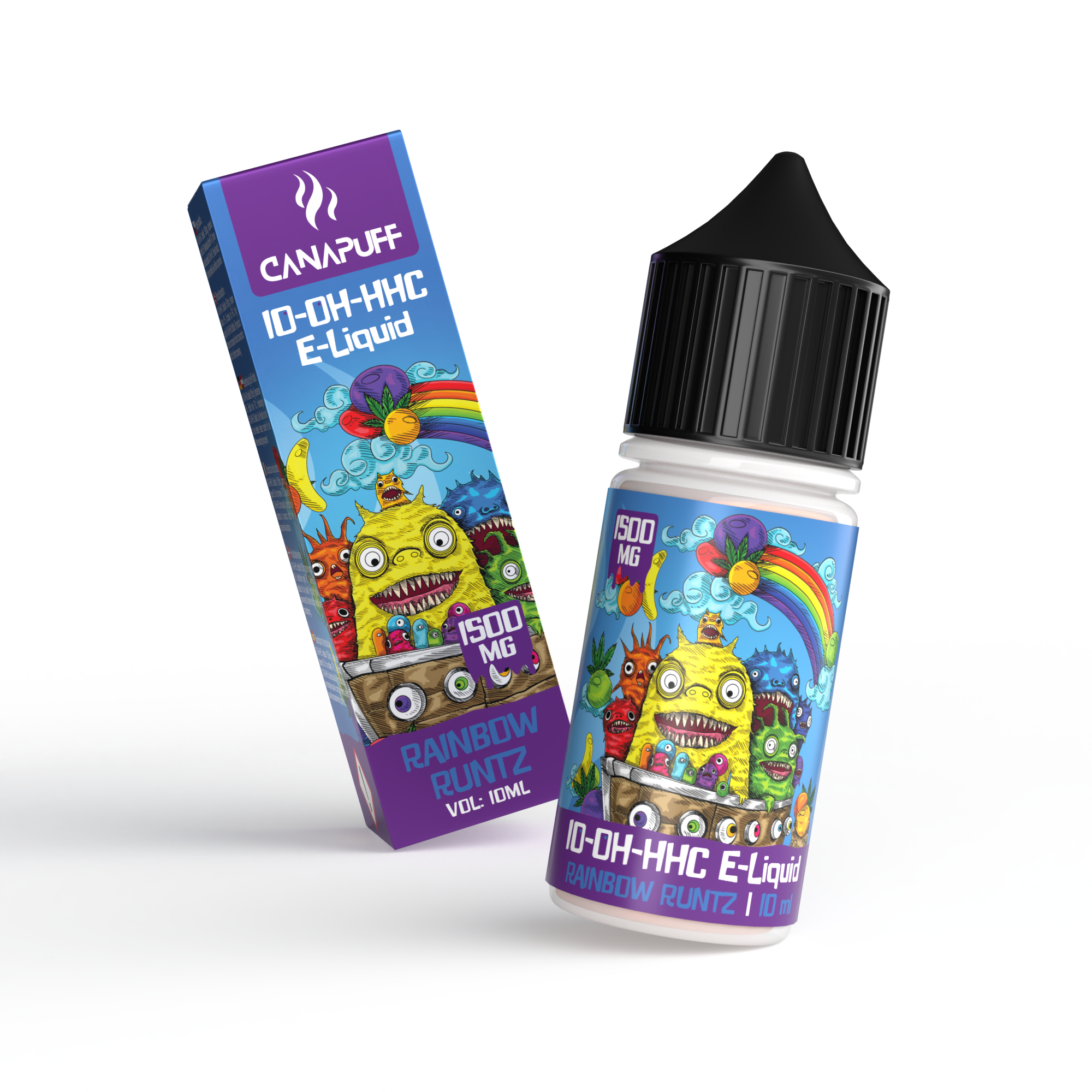
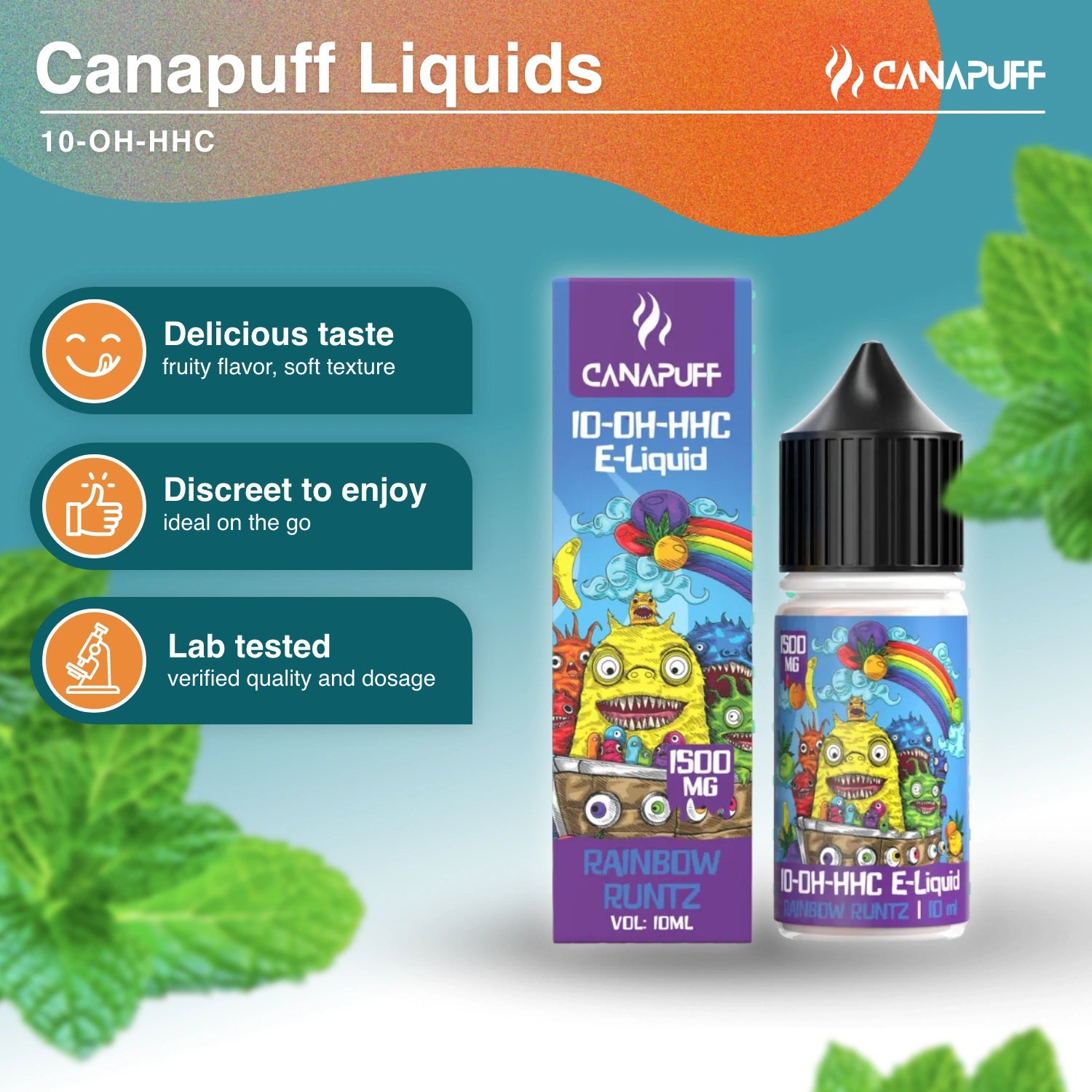
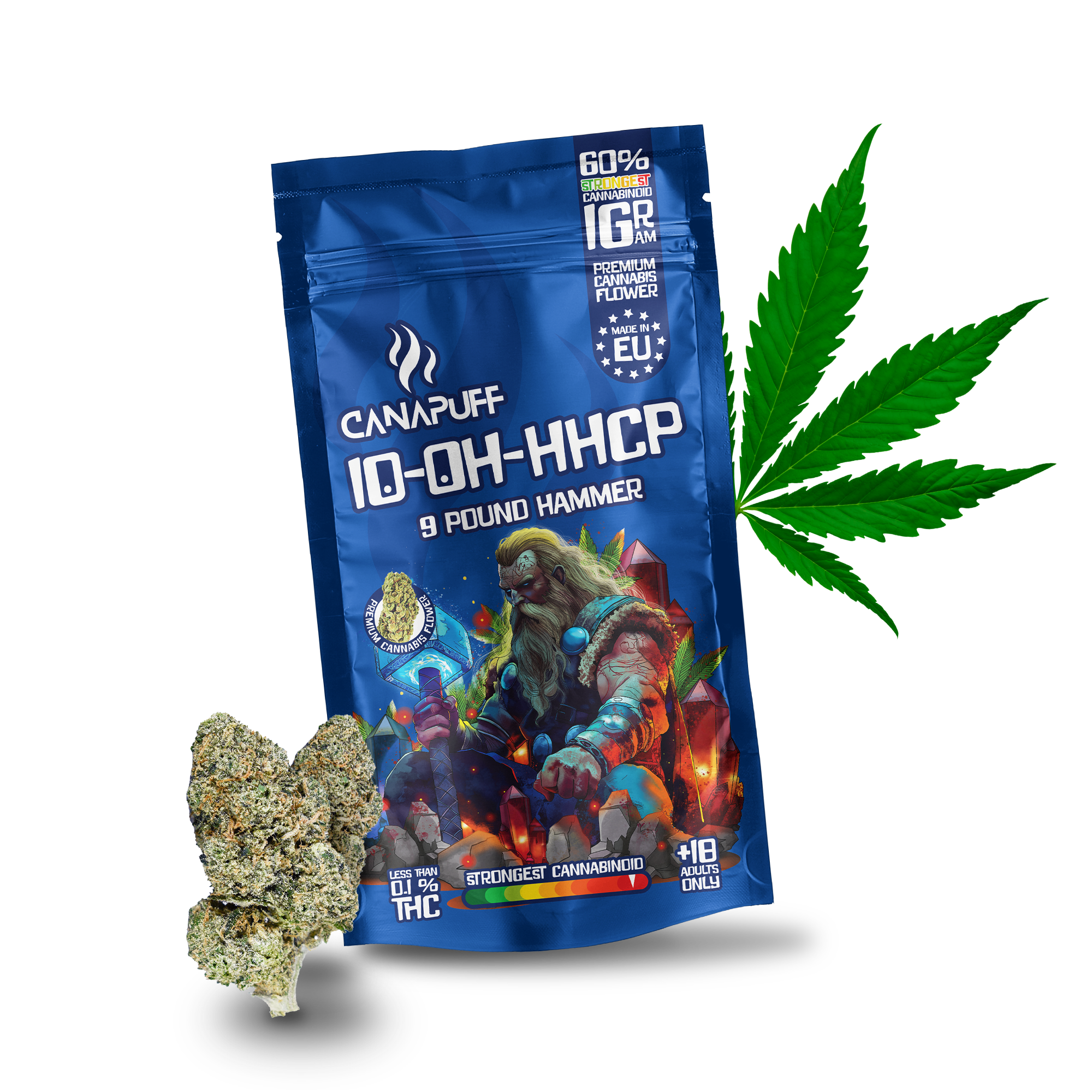
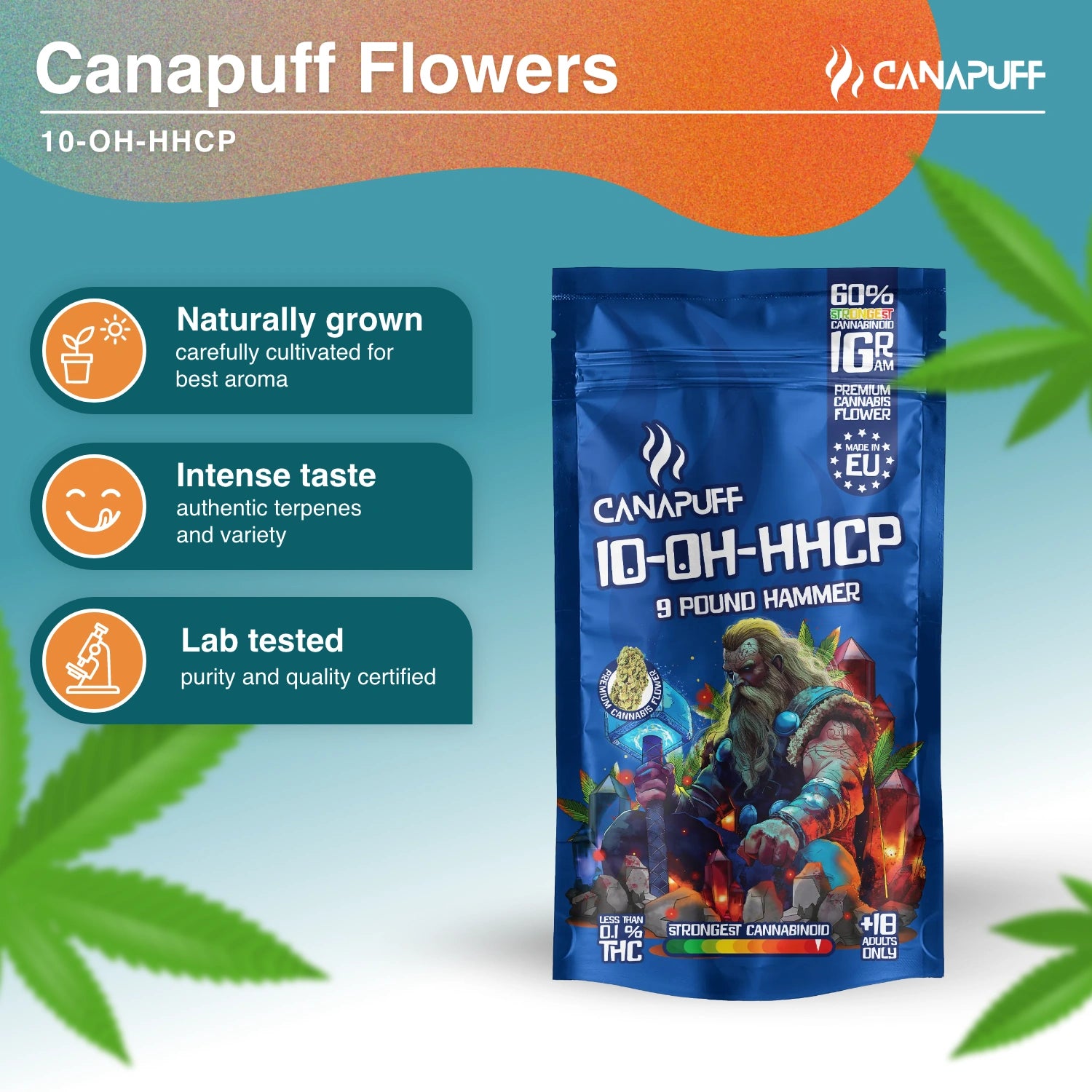

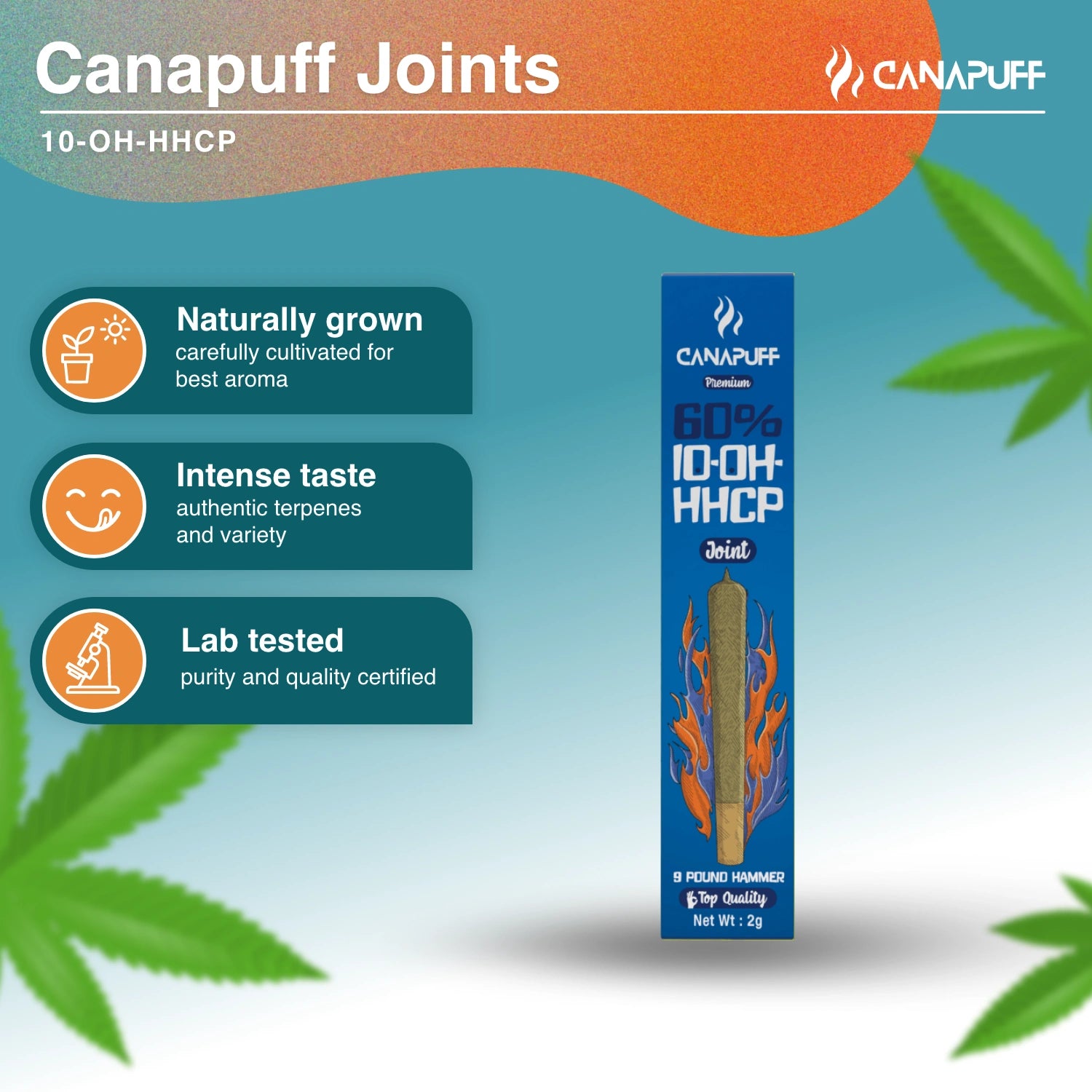



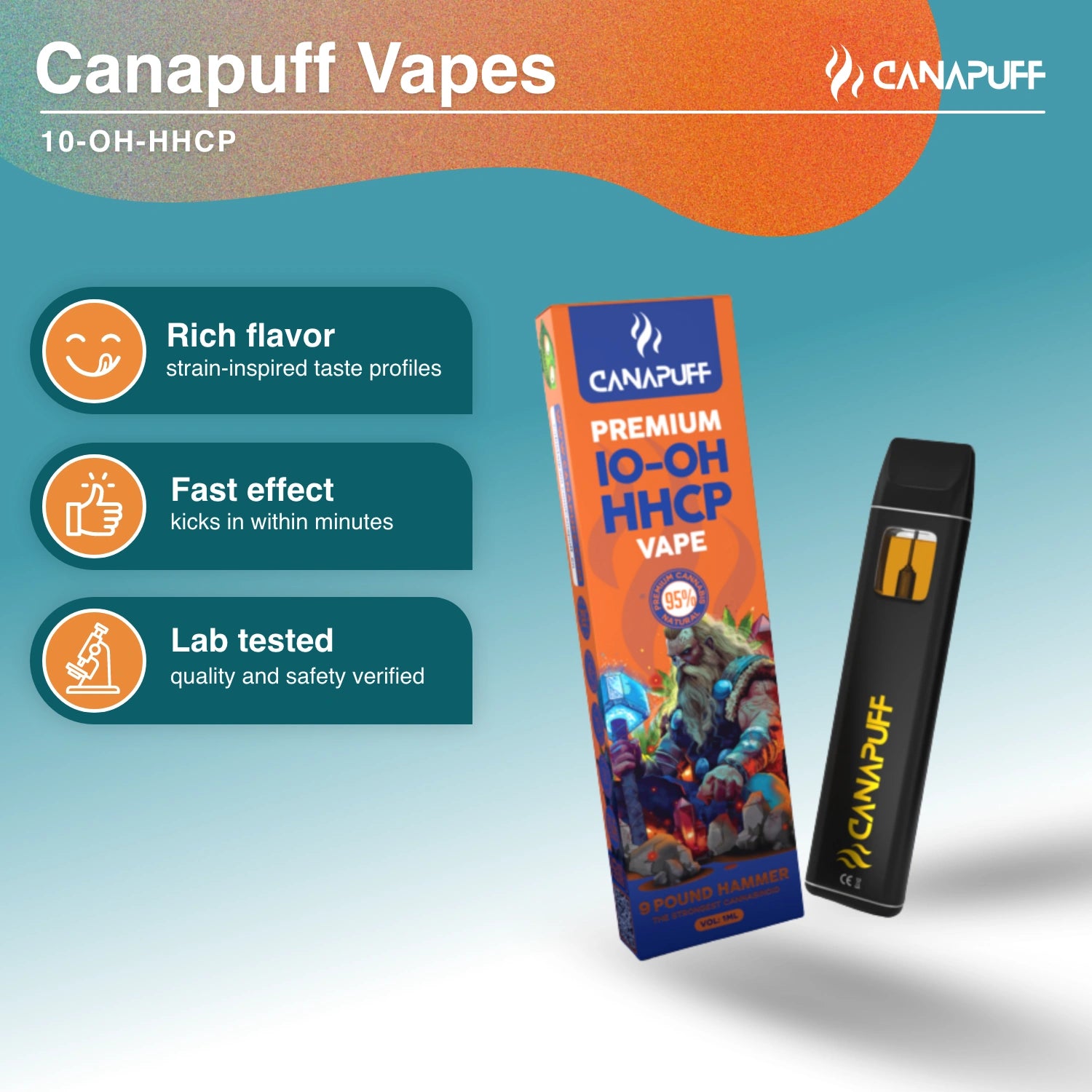







Leave a comment
This site is protected by hCaptcha and the hCaptcha Privacy Policy and Terms of Service apply.